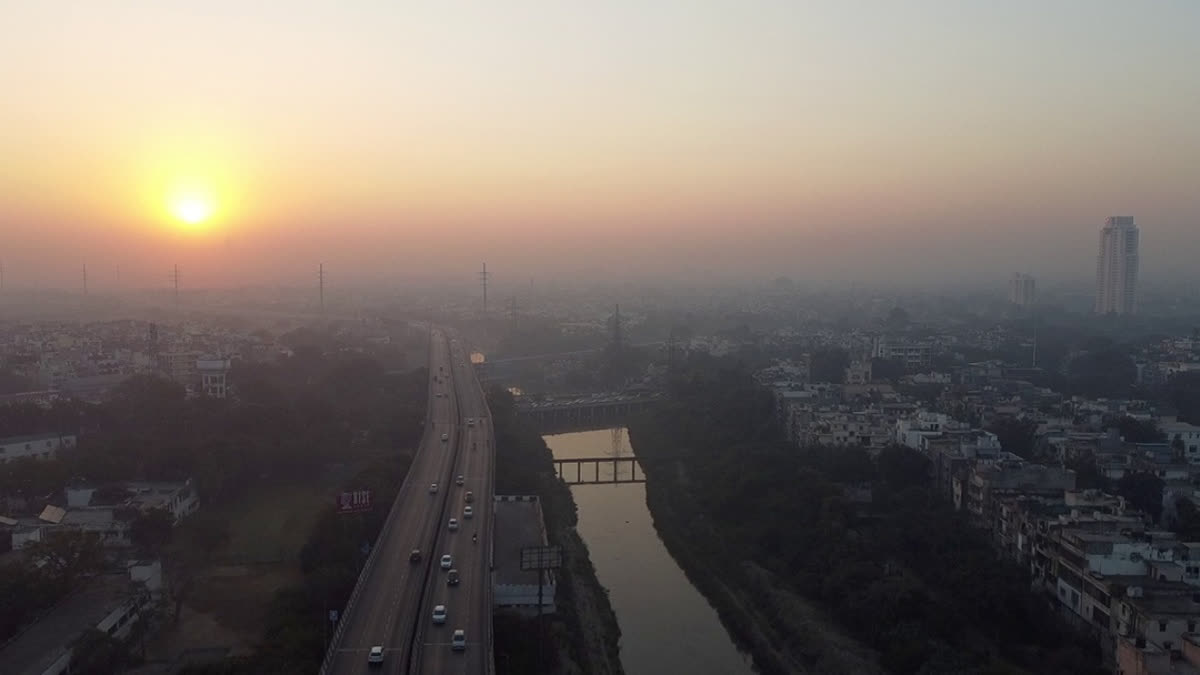New Delhi: After a brief respite, Delhi’s air quality index (AQI) plunged back into the ‘severe’ category on Tuesday, with a reading of 404, prompting authorities to impose the strictest restrictions under the Graded Response Action Plan (GRAP-IV). The situation has disrupted daily life and raised alarm among residents and experts about the long-term impacts of such hazardous pollution levels.
Severity Across Delhi-NCR
Out of the 37 air quality monitoring stations in the city, 25 recorded AQI levels above 400, signalling ‘severe’ air quality. Anand Vihar (464), Wazirpur (450), and Vivek Vihar (446) emerged as the worst-affected areas. Key locations such as Punjabi Bagh (448), Nehru Nagar (441), and Mandir Marg (412) also reported alarming pollution levels. Meteorologists attribute the spike to stagnant winds, low temperatures, and high humidity, which are trapping pollutants in the atmosphere.
“With AQI levels consistently breaching the 400 mark, it’s a health emergency,” said Dr Rajesh Kumar, a pulmonologist at AIIMS, highlighting the risk of respiratory and cardiovascular diseases.
Impact on Education and Daily Life
In response, the Commission for Air Quality Management (CAQM) mandated hybrid learning modes for students from Classes VI-IX and XI across Delhi, Gurugram, Faridabad, Ghaziabad, and Noida. Schools and colleges were directed to shift to online classes entirely, disrupting traditional learning patterns. Parents have expressed mixed feelings about this move.
“We understand the necessity, but online classes cannot replace in-person education. My son struggles with the lack of interaction,” said Ritu Mehra, a parent in East Delhi.
The transportation and construction sectors have also been significantly affected. The entry of non-essential diesel vehicles, except those meeting BS-VI standards, has been banned. All construction activities, including public infrastructure projects, are halted, leading to job losses among daily wage workers.
“I’m a labourer, and this sudden halt in work means no income for my family. We are being hit the hardest,” said Ramesh, a construction worker in Noida.
Emergency Measures Under GRAP-IV
Under GRAP-IV, stringent measures include:
- Vehicular Restrictions: Prohibition of older diesel vehicles and heavy-duty trucks, except for essential services.
- Construction Ban: All construction and demolition activities, even for public projects, are halted.
- Institutional Changes: Advisories for staggered timings in central government offices and potential implementation of odd-even vehicle schemes.
Experts fear these measures, while necessary, are reactive rather than preventive.
Residents Struggle as Health Risks Mount
The severe air quality has heightened health risks, with hospitals reporting an uptick in respiratory complaints. Children and elderly individuals remain the most vulnerable. Residents have also expressed frustration at the lack of substantial progress in addressing the root causes of pollution.
“Every winter, we face this nightmare. Yet, there’s no permanent solution. The government needs to prioritize this issue,” said Suresh Gupta, a resident of Punjabi Bagh.
Way Forward
The Indian Meteorological Department (IMD) has warned of stagnant conditions persisting for the next few days, exacerbating pollution levels. Meanwhile, the Supreme Court has urged the government to create mechanisms like CAQM for other states and submit a list of highly polluted cities, emphasizing that pollution is a “pan-India” issue.
As Delhi grapples with this recurring crisis, citizens and experts alike are calling for holistic solutions to combat the hazardous smog that threatens health, livelihoods, and the city’s future.
Read More:



